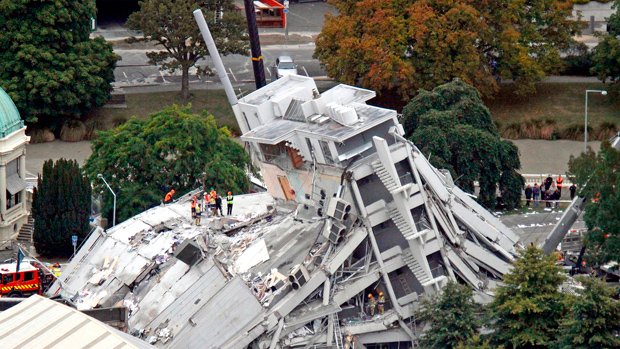Earthquake-proofing Australian buildings

The magnitude 6.3 earthquake in Christchurch on 22 February 2011, brought home a startling reality of the vulnerability of buildings in quake-prone areas.
Now, engineers have designed a new project to identify the types of buildings most at risk of collapsing in earthquakes – and what the best ways are to strengthen them.
Unlike New Zealand, Australia doesn’t sit atop a tectonic plate boundary, so we face a lower earthquake risk. But major quakes in Australia are not unheard of. When a 5.6-magnitude quake struck Newcastle in 1989, it killed 13 people and incurred a cost of about $4 billion.
“We’re in a pretty stable continental area,” says project leader Professor Mike Griffith, a structural engineer from the University of Adelaide. “But there are probably faults close to every city that we don’t know anything about.”
Mike and his colleagues have been collecting data on the types of buildings that fared better in the ‘earthquake swarm’ that struck Christchurch in 2010 and 2011.
Earthquake-vulnerable buildings
The team – which includes researchers from the University of Auckland in New Zealand and the University of Pavia in Italy – are also determining whether old buildings that had been seismically strengthened were better off, and what types of these ‘retrofitting’ techniques were most effective.
“The idea is that we can then document the really effective techniques, get some idea of costings, and publish that information so that engineers around the rest of the world can take advantage of it,” Mike told Australian Geographic.
Old buildings in Australia and New Zealand share a similar construction style, so the lessons learnt from Christchurch can apply to Australia.
Until the 1930s, both countries built unreinforced masonry buildings; that is, the walls weren’t braced by reinforcing beams. “The old stone and clay brick built in the late 1800s and early 1900s is the most vulnerable,” Mike says.
New Zealand abandoned this style of construction after the major Hawke’s Bay earthquake in 1931, but many Australians still renovate and live in these unreinforced buildings.
Fatal falling bricks after a quake
In an earthquake, it’s often the collapsing chimneys and parapets that threaten human life.
“When the ground shakes back and forth, the chimneys and the parapets – they’ve been hammered by wind and rain for decades, so they’ve lost a bit of strength – these things will just wobble over,” Mike says. “And a brick falling six or eight metres is enough to kill someone.”
Eliminating some of the danger is simple. Chimneys and parapets can be secured to the roof with steel braces and straps – a relatively inexpensive solution, Mike says. But making more substantial changes, like reinforcing walls, can be costly.
The Mike’s team will investigate exactly which of these measures could be worthwhile in Australia. So far, they know that old buildings in Christchurch that were strengthened to one-third of modern standards were no better off. Strengthening to two-thirds, however, made the building significantly stronger and safer.
Reducing the risk of earthquake fatalities
“I’d expect only certain vulnerable types of buildings would need to be retrofitted,” says Dr Helen Goldsworthy, an earthquake engineer from the University of Melbourne. “For example, those unreinforced masonry heritage structures that are of great cultural value and are likely to be severely damaged [by medium-sized quakes].”
In the longer term, Helen says, more rigorous design codes will need to be established, to ensure safer buildings are constructed in the first place.
“The less vulnerable building types may not be more expensive, or might be marginally more,” she says. “But they would reduce the overall risk of a very large number of fatalities if a very rare earthquake were to strike one of the capital cities.”

